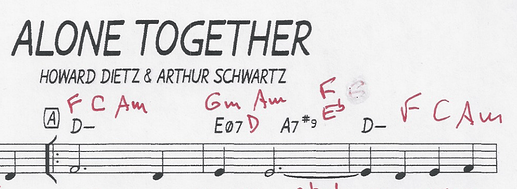Hey everyone ![]()
This Wednesday Jovino is hosting a follow up session on his triad harmonic/improvisation concepts. Jovino has prepared 2 annotated chord charts with his triad options; one jazz standard and one Brazilian standard.
Download the chord chart files here:
-
“Alone Together” with triads.pdf (952.8 KB)
-
“Brigas Nunca Mais” with triads.pdf (892.9 KB)
In the session on Wednesday we will work through these scores outlining how the triad options can be used to find creative voicing options and how to use these triad shapes in an improvisational context.
Jovino will walk you through the triad options process and the idea is that this approach can then be applied to any tunes that you are working on.
If you haven’t already, check out Jovino’s seminar recording from last month where the underlying concept is explained. This information will help you to get the most out of the upcoming session:
@richard18, @Humberto, & @edwin1 - I’m tagging you guys here as I know you were interested in the details of the follow up session.
Cheers,
Hayden

